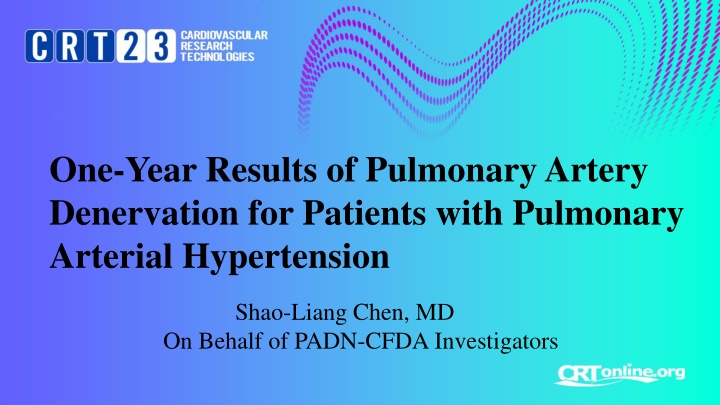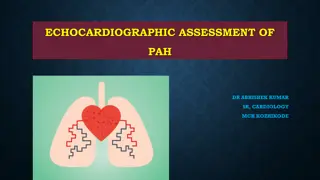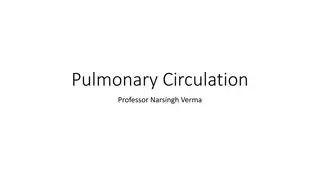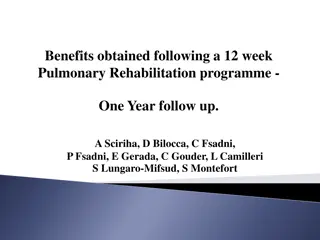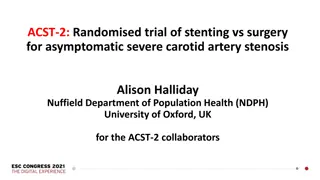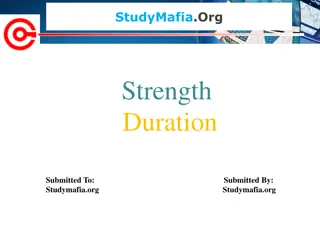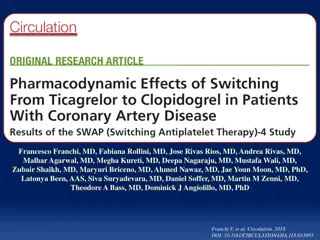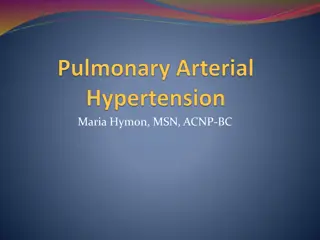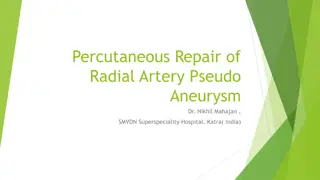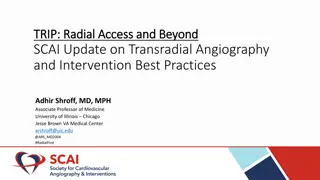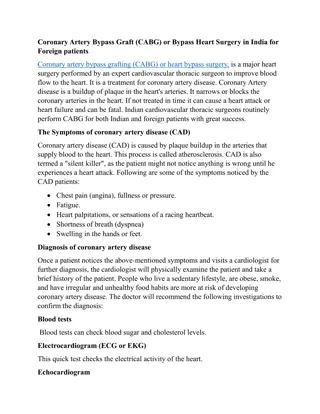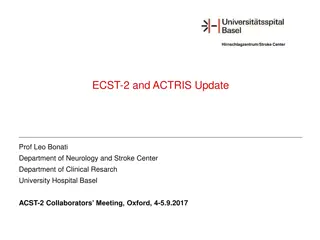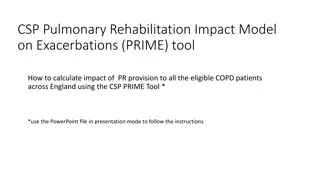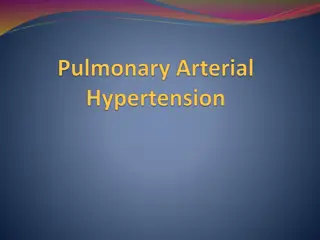One-Year Results of Pulmonary Artery Denervation for Patients with Pulmonary Arterial Hypertension
Pulmonary artery denervation (PADN) study by Shao-Liang Chen, MD, shows promising results in improving hemodynamics and exercise capacity for patients with pulmonary arterial hypertension. The trial aims to determine the one-year efficacy of PADN in Group I PAH patients through a prospective, randomized, multi-center approach. The study flow chart depicts the enrollment process and treatment comparison between PADN plus PDE-5i and sham plus PDE-5i. Key inclusion criteria involve clinically stable PAH patients aged 18-70 years without prior PAH-specific medications.
Uploaded on Apr 16, 2025 | 0 Views
Download Presentation

Please find below an Image/Link to download the presentation.
The content on the website is provided AS IS for your information and personal use only. It may not be sold, licensed, or shared on other websites without obtaining consent from the author.If you encounter any issues during the download, it is possible that the publisher has removed the file from their server.
You are allowed to download the files provided on this website for personal or commercial use, subject to the condition that they are used lawfully. All files are the property of their respective owners.
The content on the website is provided AS IS for your information and personal use only. It may not be sold, licensed, or shared on other websites without obtaining consent from the author.
E N D
Presentation Transcript
One-Year Results of Pulmonary Artery Denervation for Patients with Pulmonary Arterial Hypertension Shao-Liang Chen, MD On Behalf of PADN-CFDA Investigators
Disclosure Shao-Liang Chen, MD The inventor of the PADN, but not the owner of the PADN patent Received speaker honoraria from Microport, Pulnovo, Boston International Scientific, Medtronic, Sinofi, and BioMed A Fellow at the Collaborative Innovation Center for Cardiovascular Disease Translational Medicine, Nanjing Medical University, China Has received grants from the National Scientific Foundation of China
Background WHO Group I pulmonary arterial hypertension (PAH) is a progressive, incurable disease, leading to premature death Previous observational studies have demonstrated that pulmonary artery denervation (PADN) improves hemodynamic and exercise capacity in patients with PAH PADN-CFDA trial has showed treatment effect of PADN for PAH patients However, the 1-year effectiveness of PADN has not been reported in a multicenter, randomized, sham-controlled trial CRT 2023 LBCT Chen et al. JACC 2015; Zhang H Chen et al. JACC: Cardiovasc Interv 2022
Aims To determine the one-year efficacy of PADN in Group I PAH patients CRT 2023 LBCT
Study Flow Chart 186 patients enrolled between January 2018 and June 2021 at 11 clinical sites in China Design DESIGN: Prospective, randomized, multi-center, sham-control clinical evaluation of pulmonary artery denervation (PADN) for patients with PAH 58 patients excluded 128 patients were randomized OBJECTIVE: To evaluate the safety and efficacy of PADN treatment at one-year follow-up PADN plus PDE-5i (N=63) Sham plus PDE-5i (N=65) PRINCIPAL INVESTIGATOR Shao-Liang Chen, MD, PhD Nanjing First Hospital, Nanjing Medical University, China Early assessment at 1-month Clinical follow-up at 1-year in 100% (N=65) Clinical follow-up at 1-year in 100% (N=63) CRT 2023 LBCT PDE-5i = phosphodiesterase-5 inhibitor
Major Inclusion Criteria Clinically stable patients aged 18 to 70 years with PAH who were not being treated with any PAH-specific medications for at least 30 days PAH was confirmed by right heart catheterization as: - mPAP 25 mmHg - PVR >3 WU - PAWP <15 mmHg - Negative acute vasoreactivity test (for idiopathic, heritable, or drug- induced PAH) CRT 2023 LBCT
Major Exclusion Criteria Patients with Group II-V pulmonary hypertension Cardiac index <1.5 L/min/m2 Creatinine clearance <30 ml/min Inflammation or cancer Tricuspid valve or pulmonary valve stenosis Pulmonary veno-occlusive disease CRT 2023 LBCT
Endpoints Outcome Time point Powered Blinded Primary endpoint -- Difference in the change in the 6MWD (m) Secondary endpoints -- PVR via RHC (Wood units) -- NT-proBNP (pg/ml) -- Clinical worsening (%) -- Satisfactory clinical response (%) -- Cardiac function via cardiac echo 12 months Superiority Yes 12 months 12 months 12 months 12 months 12 months -- -- -- -- -- Yes Site report Yes Yes Yes PVR = pulmonary vascular reistance RHC = right heart catheterization CRT 2023 LBCT
Baseline Data PADN n = 63 Sham n = 65 Age, years 41.2 11.9 39.5 11.5 Female, n (%) 57 (90.5) 49 (75.4) Idiopathic PAH, n (%) 36 (57.1) 34 (52.3) CTD-related PAH, n (%) 14 (22.2) 17 (26.2) Associated with CHD, n (%) 9 (14.3) 13 (20.0) WHO functional class III/IV, n (%) 35 (55.6) 29 (34.6) 6-minute walk distance, m 387.5 91.7 414.3 91.5 NT-proBNP, pg/ml 2679 3358 2015 2928 PVR, Woods Unit 11.7 5.6 10.3 4.5 CRT 2023 LBCT PAH=pulmonary arterial hypertension; CTD=connective tissue disease; CHD=congenital heart disease; PVR=pulmonary vascular resistance
Change in the 6-Minute Walk Distance One-year result CRT 2023 LBCT
Conclusions Treatment with PADN plus a PDE-5i was associated with a further increase in 6-minute walk distance after 6-month until to one-year follow-up compared with PDE-5i treatment alone (81.2 m vs 33.8 m). In addition, treatment with PADN reduced PVR and PAP, improved right ventricular function, reduced tricuspid regurgitation and NT-proBNP levels, and improved clinical outcomes during one-year follow-up. PADN-CFDA Trial
